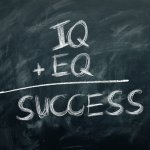Harnessing Emotional Intelligence: Examples that Transform Lives
In a world increasingly dominated by technology and data, the importance of emotional intelligence (EI) cannot be overstated. Emotional intelligence is the ability to recognize, understand, and manage our emotions and the emotions of others. It plays a crucial role in how we communicate, form relationships, and make decisions. Studies have shown that emotional intelligence can be a predictor of success in various spheres of life, including work, relationships, and overall well-being. Let’s dive into some inspiring examples of how harnessing emotional intelligence can profoundly transform lives, as well as actionable steps you can take to cultivate your own EI.
Real-Life Examples of Emotional Intelligence in Action
1. The Compassionate Leader
Consider the story of Indra Nooyi, former CEO of PepsiCo. Under her leadership, Nooyi transformed the culture of the company by introducing a people-centric approach. She emphasized the importance of understanding employees’ emotional needs, incorporating family-friendly policies, and fostering an environment where everyone felt valued. This increased employee morale, reduced turnover, and propelled the company to exceptional financial success. Nooyi’s ability to empathize with her team members and cultivate their strengths exemplifies how emotional intelligence can guide organizational growth and employee satisfaction.
2. The Empathetic Healthcare Worker
In healthcare settings, emotional intelligence is vital. For instance, nurses and doctors often face emotionally charged situations. One nurse, Jess, took a particularly challenging case to heart when a patient shared her struggles with coping with terminal illness. Instead of focusing solely on medical interventions, Jess set aside time to sit with the patient, actively listening and providing her with space to express her feelings. This emotional connection not only alleviated the patient’s anxiety but also empowered her to engage more actively in her treatment, demonstrating how emotional intelligence can have immediate, positive effects on patient care.
3. The Transformational Educator
In the realm of education, Mr. Smith, a high school teacher, employed emotional intelligence in his classroom by creating an inclusive environment. Recognizing the diverse emotional and social backgrounds of his students, he implemented activities that encouraged students to share their feelings and experiences. As a result, students built strong bonds, improving their communication skills and academic performance. By fostering an emotionally intelligent classroom, Mr. Smith empowered his students to express themselves while encouraging mutual respect and understanding.
4. The Resilient Individual
On a personal level, consider the story of Maria, who faced significant challenges following a traumatic event. Unlike many who might give in to despair, Maria harnessed her emotional intelligence to not only acknowledge her feelings of anger and sadness but also to allow herself the grace to heal. She utilized self-reflection techniques, such as journaling and mindfulness, to understand her emotions and to respond in healthier ways. Through this process, Maria not only improved her mental health but also inspired others around her to pursue healing and resilience in their own challenges.
Action Steps to Cultivate Emotional Intelligence
Harnessing emotional intelligence is a continuous journey that can yield transformative results. Here are actionable steps you can take to enhance your EI:
Step 1: Self-Awareness
Foster self-awareness by taking some quiet time each day or week to reflect on your emotions. Ask yourself: What am I feeling? Why am I feeling this way? Journaling can be an excellent tool for this practice. Set aside time to write down your thoughts and emotional responses to various situations. By regularly reviewing your feelings, you will become more in tune with your emotions and how they influence your behavior.
Step 2: Practice Empathy
Being empathetic does not require grand gestures. Start small by putting yourself in someone else’s shoes when they share their experiences with you. Listen actively without interrupting, and reflect on what they might be feeling. This not only enhances your understanding of others but also builds stronger, more meaningful relationships.
Step 3: Develop Emotional Regulation
Emotional regulation is critical for responding positively in high-pressure situations. When faced with intense emotions, practice techniques like deep breathing or counting to ten before reacting. This pause will help you respond thoughtfully rather than impulsively, allowing for healthier interactions.
Step 4: Enhance Social Skills
Engage in social situations that allow you to practice your interpersonal skills. Join groups that align with your interests, contribute to community projects, or participate in discussions that challenge you. The more you interact with diverse perspectives, the more adept you will become at reading social cues and adjusting your responses accordingly.
Step 5: Seek Feedback
Encourage feedback from trusted friends or colleagues regarding your emotional interactions. Their insights can help you identify areas for improvement, teaching you how your emotional responses affect others. Use this feedback constructively to foster stronger relationships.
Conclusion
Harnessing emotional intelligence can truly transform lives. Whether in leadership, healthcare, education, or personal experiences, the cultivation of EI leads to improved relationships, enhanced well-being, and the ability to navigate life’s challenges with resilience and grace. By taking simple yet intentional steps to nurture your emotional intelligence, you can create positive ripples not only in your life but also in the lives of those around you.
As you embark on this transformative journey, remember:
"Emotional intelligence is not about being emotional; it is about mastering your emotions to create positive action!"
If you found these insights valuable, consider following Kevin on Instagram (@KSteineman) for more content on emotional intelligence and personal growth!
You might also like
More from Emotional Intelligence
Using Emotional Intelligence to Navigate Relationships: 10 Key Examples
Using Emotional Intelligence to Navigate Relationships: 10 Key Examples In a world increasingly defined by digital interactions, emotional intelligence (EI) has …
Top 5 Emotional Intelligence Exercises to Enhance Your Skills
Top 5 Emotional Intelligence Exercises to Enhance Your Skills Emotional intelligence (EI) is the ability to perceive, control, and evaluate emotions—not …
Emotional Intelligence: A Definition That Empowers Your Relationships
Emotional Intelligence: A Definition That Empowers Your Relationships In our fast-paced, digitally-driven world, the importance of emotional intelligence (EI) has grown …

































